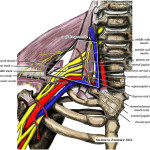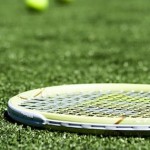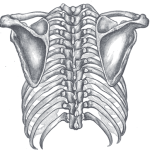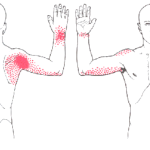Introduction
Now, we have discussed Arnold Schwarzenegger on this site before, in a post about the psychology of sports injury and physiotherapy. However, it seems that man was quite the insightful gentleman. In his text The Encyclopedia of Modern Bodybuilding Arnold discusses the mind to muscle connection and the importance of not just lifting a weight up and down, but having your “mind in the muscle”. Interestingly, he states its importance in his dominance as a bodybuilder.
Indeed, it has been established in the literature that concentrated mental efforts can increase neural activation of particular muscle groups. Snyder and Leech (2009) were able to display EMG increases in latissimus dorsi activation following “expert instruction” on emphasising lat dorsi activation. However, you may currently be thinking to yourself – I thought this post was about scapular rehabilitation not the Governator! Well, you have not been lured under false pretenses, this article will discuss new research on the impact of conscious correction of scapular orientation in shoulder rehabilitation.
So, Why Do We Care About Scapular Orientation?
Well, the main reason has to be that research has found scapular dyskinesis is associated with chronic shoulder pain in overhead athletes (Kilber & Sciascia, 2010; Burkhart et al., 2003). Furthermore, as I’m sure will be your own clinical experience, these athletes have associated soft tissue restrictions, postural dysfunctions and altered scapular muscle recruitment and strength ratios when compared to healthy controls. Thus, it should came as no surprise to anyone that the scapulothoracic joint requires specific rehabilitation, particularly when treating athletes who participate in overhead sports (Ludewig & Reynolds, 2009).
Currently our exercise prescription for the rehabilitation of scapular dyskinesis is based on 2 different concepts:
- Promoting normal movement patterns (think: neuromuscular coordination exercises) (Mottram et al., 2009)
- Eliciting strong contractions in selected muscles of the scapula, regardless of the movement patterns, as discussed in this post (think: strength exercises) (Reinold et al., 2009).
When attempting to correct aberrant movement patterns of the scapula we frequently train the patient to consciously correct the position of their scapula into a “neutral” resting position (Ellenbecker & Cools, 2010). However, there is little research regarding the impact on muscle activation that such conscious scapular correction has. Therefore, Mey et al. (2013) investigated the influence of conscious correction of scapular orientation on the trapezius muscle activation levels during 4 exercises in overhead athletes with scapular dyskinesis.
New Research On Correcting Scapular Orientation
Mey et al. (2013) included thirty healthy subjects all of whom were active in overhead sports, including:
- Volleyball
- Swimming
- Badminton
To be included the subjects had to display altered scapular resting position and dyskinesis during dynamic clinical examination on the basis of a yes/no method. The subjects were excluded if they had significant history of cervical or shoulder injury. The authors then evaluated SEMG activity of all 30 included subjects in the following muscles:
- Upper Trapezius
- Middle Trapezius
- Lower Trapezius
They evaluated the activity in each during the following 4 exercises:
- Prone extension
- Sidelying external rotation
- Sidelying forward flexion
- Prone horizontal abduction with external rotation
These measures served as a ‘baseline’ measure. Following this the athletes where then taught the process of conscious correction of their scapular position. In both the individual’s resting posture in standing and in exercise-specific positions (prone or sidelying) they were provided with visual, auditory and kinesthetic cues.
“For example, for individuals with an anterior-tilted scapula, instructions included, “Gently bring the tip of your shoulder blade toward your spine”; for those with a downwardly rotated scapula, instructions included, “Gently lift the top of the shoulder”; and for those with a predominantly protracted scapula, instructions included, “Gently spread the front of your shoulder apart to draw your shoulder blade toward midline.” – Mey et al. (2013)
So, what did they find out?
Results of The Research
This article produced some interesting results! The study’s primary finding was that with conscious correction of scapular orientation there was an increase in muscle activation (absolute, not relative) in all 3 sections of the trapezius muscles for prone extension and sidelying external rotation exercises only. Furthermore, the changes in activation were modest, with all mean changes sitting between 2.2% and 13.8% MVIC.
Thus, conscious correction of scapular position did not alter the trapezius muscle activation for either sidelying forward flexion or prone horizontal abduction with external rotation. Another interesting finding of the study was that for all exercises the UT/MT and UT/LT values did not change with conscious correction of scapular orientation.
Clinical Implications of This Research
Let’s just wait a hot second before we throw away the concept of consciously correcting scapular position… think of what wise Arnold has told us. There a few variables which we need to consider…
Study Subjects
The study evaluated only a small group of healthy athletes who performed overhead sports. The athletes did not have pain, only the presence of some type of scapular dyskinesis. Unfortunately, these results may not apply to an injured or non-athletic population. It is quite possible that this intervention may be more (or even less) effective in other populations, such as those with painful subacromial impingement syndrome.
Furthermore, the study group was heterogenous due to the inclusion of various types of dyskinesis. This meant there was variation between the “intervention” given to each subject and would ultimately result in the adoption of different corrective motor control strategies. Whilst the authors suggest this method was adopted secondary to the low reliability of visual assessment for type of scapular dyskinesis, which I get, it does create an issue of variability.
Muscles Examination
This study only evaluated the activation of the 3 portions of trapezius. The activity of other important scapulothoracic muscles, including rhomboids and serratus anterior, was not measured. Furthermore, the study evaluated only the intensity of contraction, presented as %MVIC. However, we are all aware that aberrant scapular motion, or scapular dyskinesis, is related to the timing not just intensity of scapular muscle activation (Chester et al., 2010). This may mean conscious correction may have had a positive (or negative) impact on the timing of muscle activation, but not intensity.
Intervention Assessed
As suggested by the authors, correction of altered scapular resting position and aberrant scapulo-humeral rhythm during overhead movements are different entities. It is possible that the cues described above were not appropriate for altering muscular activation during movement. Indeed, previous research suggests that a functional approach to neuromuscular training may be more effective for correcting scapular dyskinesis (Roy et al., 2010).
Alternatively, you may argue that the intervention was appropriate, however, a “within treatment” re-assessment was not enough time for the patient to adequately learn and alter their muscle recruitment. A longer follow-up period may have displayed greater alterations in muscle activation, including the all important trapezius ratios.
What Are Your Thoughts?
What do you reckon about this research? Do you teach your patients to have their mind in the muscle, just like Arnie? I would love to know so be sure to let me know in the comments, or you could:
Promote Your Clinic: Are you a physiotherapist or physical therapist looking to promote your own clinic? Check this out.
References
Burkhart SS, Morgan CD, Kibler WB. The disabled throwing shoulder: spectrum of pathology part III: the SICK scapula, scapular dyskinesis, the kinetic chain, and rehabilitation. Arthroscopy. 2003;19:641-661.
Chester R, Smith TO, Hooper L, Dixon J. The impact of subacromial impingement syndrome on muscle activity patterns of the shoulder complex: a systematic review of electromyographic studies. BMC Musculoskelet Disord. 2010;11:45.
Ellenbecker TS, Cools A. Rehabilitation of shoulder impingement syndrome and rotator cuff injuries: an evidence-based review. Br J Sports Med. 2010;44:319-327.
Kibler WB, Sciascia A. Current concepts: scapular dyskinesis. Br J Sports Med. 2010;44:300-305.
Ludewig PM, Reynolds JF. The association of scapular kinematics and glenohumeral joint pathologies. J Orthop Sports Phys Ther. 2009;39:90-104.
Mey KD, Danneels L, Cagnie B, Huyghe L, Seyns E, Cools AM. Conscious correction of scapular orientation in overhead athletes performing selected shoulder rehabilitation exercises: The effect on trapezius muscle activation measured by surface electromyography. J Orthop Sports Phys Ther 2013;43(1):3-10.
Mottram SL, Woledge RC, Morrissey D. Motion analysis study of a scapular orientation exercise and subjects’ ability to learn the exercise. Man Ther. 2009;14:13-18.
Reinold MM, Escamilla RF, Wilk KE. Current concepts in the scientific and clinical rationale behind exercises for glenohumeral and scapulothoracic musculature. J Orthop Sports Phys Therpy 2009;39:105-117.
Roy JS, Moffet H, McFadyen BJ. The effects of unsupervised movement training with visual feedback on upper limb kinematic in persons with shoulder impingement syndrome. J Electromyogr Kinesiol. 2010;20:939-946
Snyder BJ, Leech JR. Voluntary increase in latissimus dorsi muscle activity during the lat pull-down following expert instruction. J Strength Cond Res. 2009 Nov;23(8):2204-9.
Related Posts










